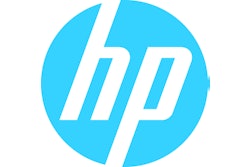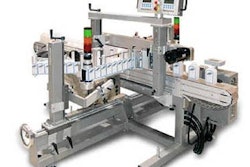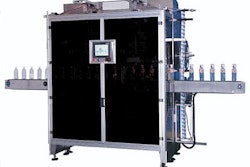Presenters were Pat Helm, managing partner of integrator Mfg. Systems Group; Chris Hook, director RFID market development, Zebra Technologies; and RFID and research and development manager Mike Sanzone of MPI Label Systems. Some intelligence they passed along included the following:
• Don’t be intimidated: RFID tags are simply another form of labeling in the manufacturing environment.
• Get all departments involved in RFID from the start. Time is wasted if departments are left out at the beginning, then must catch up later.
• Track and trace are two different things: Track means to monitor in transit, and trace is a historical record.
• In-mold labeling of RFID tags is in the development stage.
• Most of a tag’s cost is the silicon chip. Also, there is ongoing development in aluminum-based antennas in tags. Most tags are currently made from copper, which is costlier and presents recycling and environmental concerns when it’s part of the packaging.
• Another difference in Class 0 (read-only) and costlier Class 1 (read/write) RFID tags is that there are more inventory challenges with Class 0 tags.
• About $400ꯠ is required to reconfigure a typical manufacturing plant with three to four production lines for RFID.
• It will cost $250ꯠ to enable RFID at a typical distribution center.
• Every business will eventually be affected by RFID; though you may not like the costs and challenges at first, you’ll get over it. It will become an industry standard in five years, and some think that will happen sooner.
• In conjunction with its test with Wal-Mart, Hewlett-Packard has reported 100% read rates on RFID-labeled pallet loads.
• A Slap ’n Ship mentality won’t work, and RFID won’t fix poor supply chain business practices.
• Ultra-high-frequency RFID offers a 10’ tag-read range versus a 2’ maximum range for high frequency.
• There are always more acronyms to learn, like TDC for total delivered cost. Rather than focusing on RFID tag and system costs, focus on your TDC that RFID has great potential to lower.
























